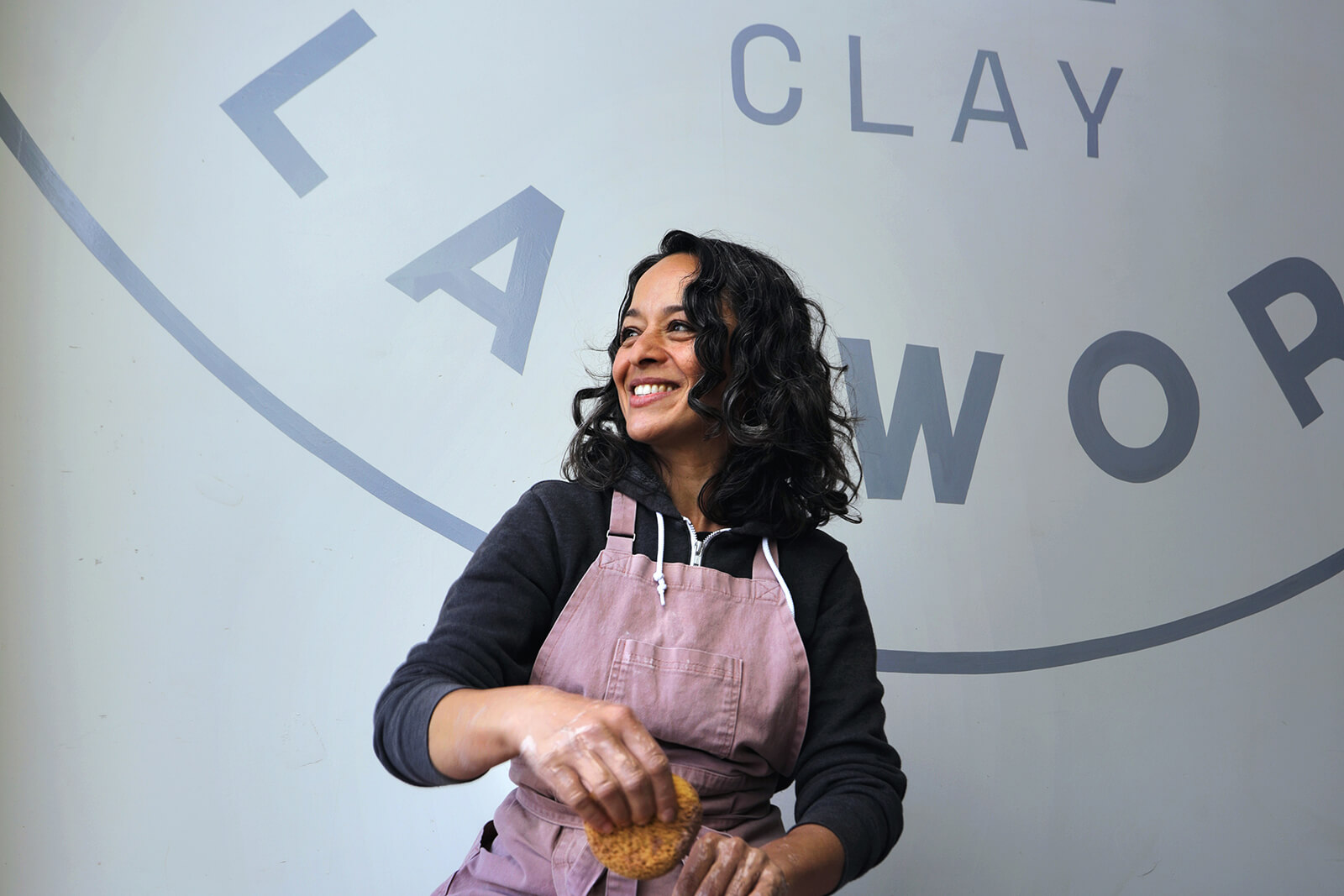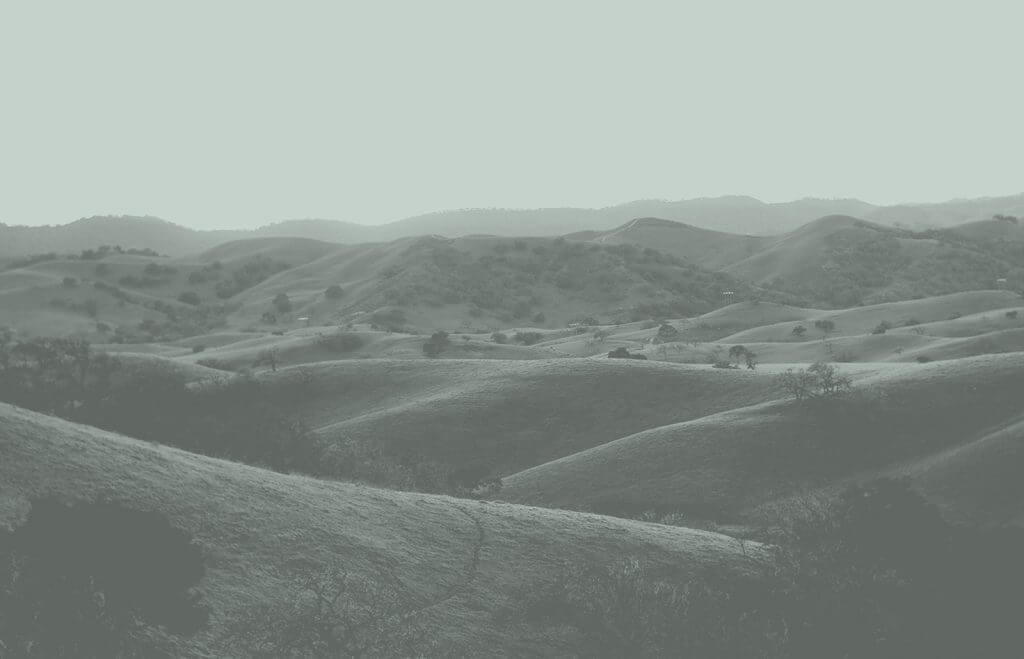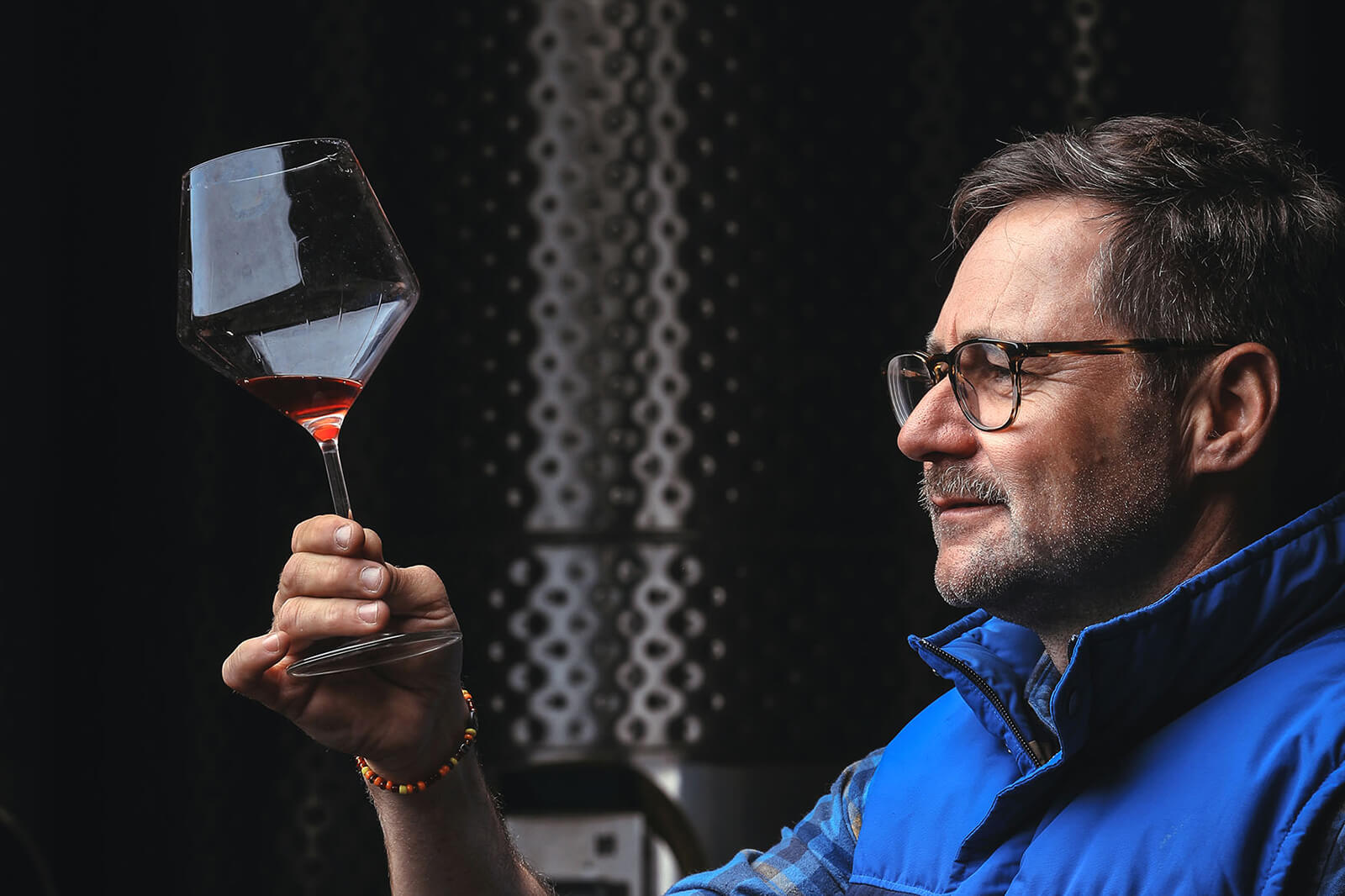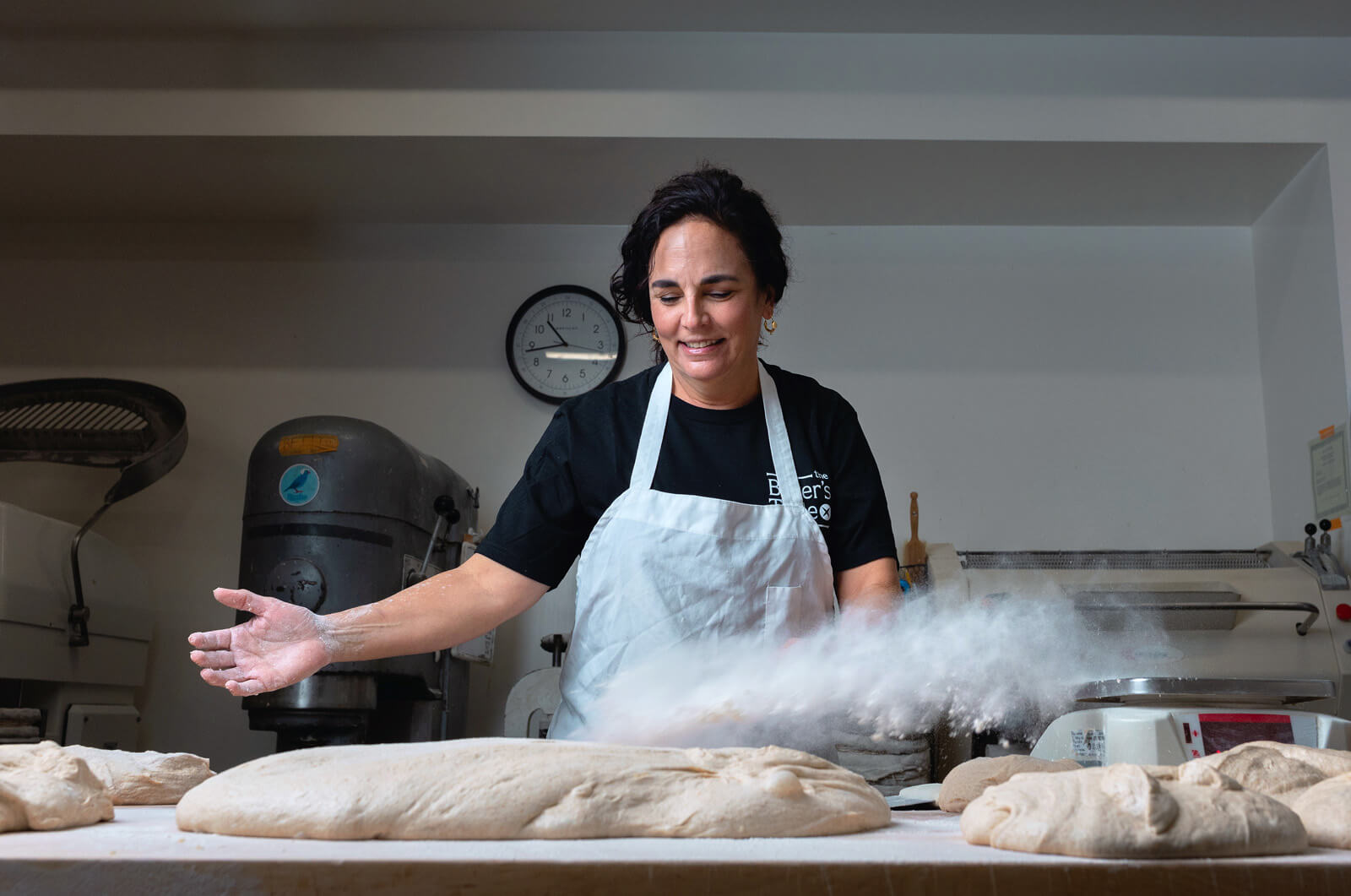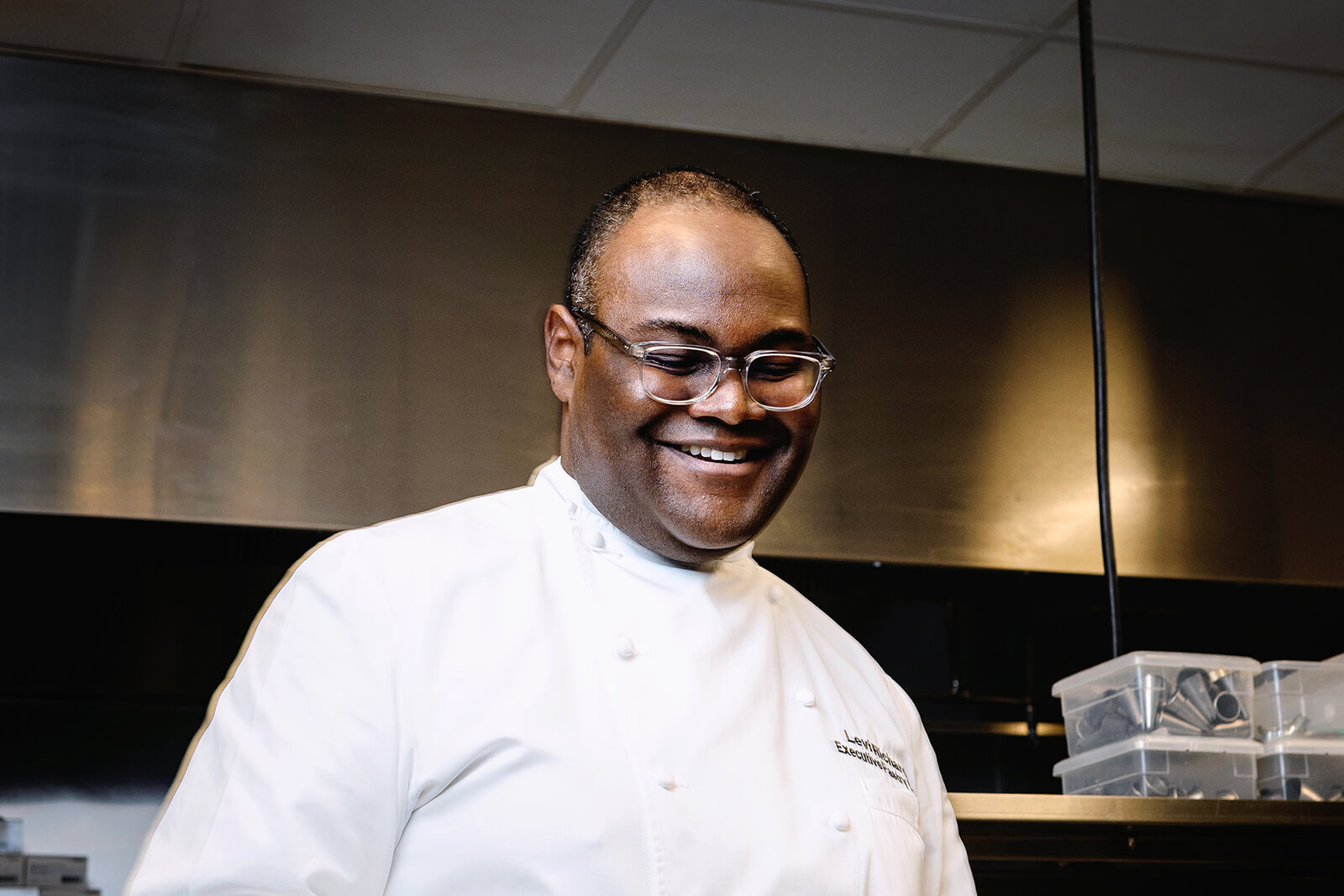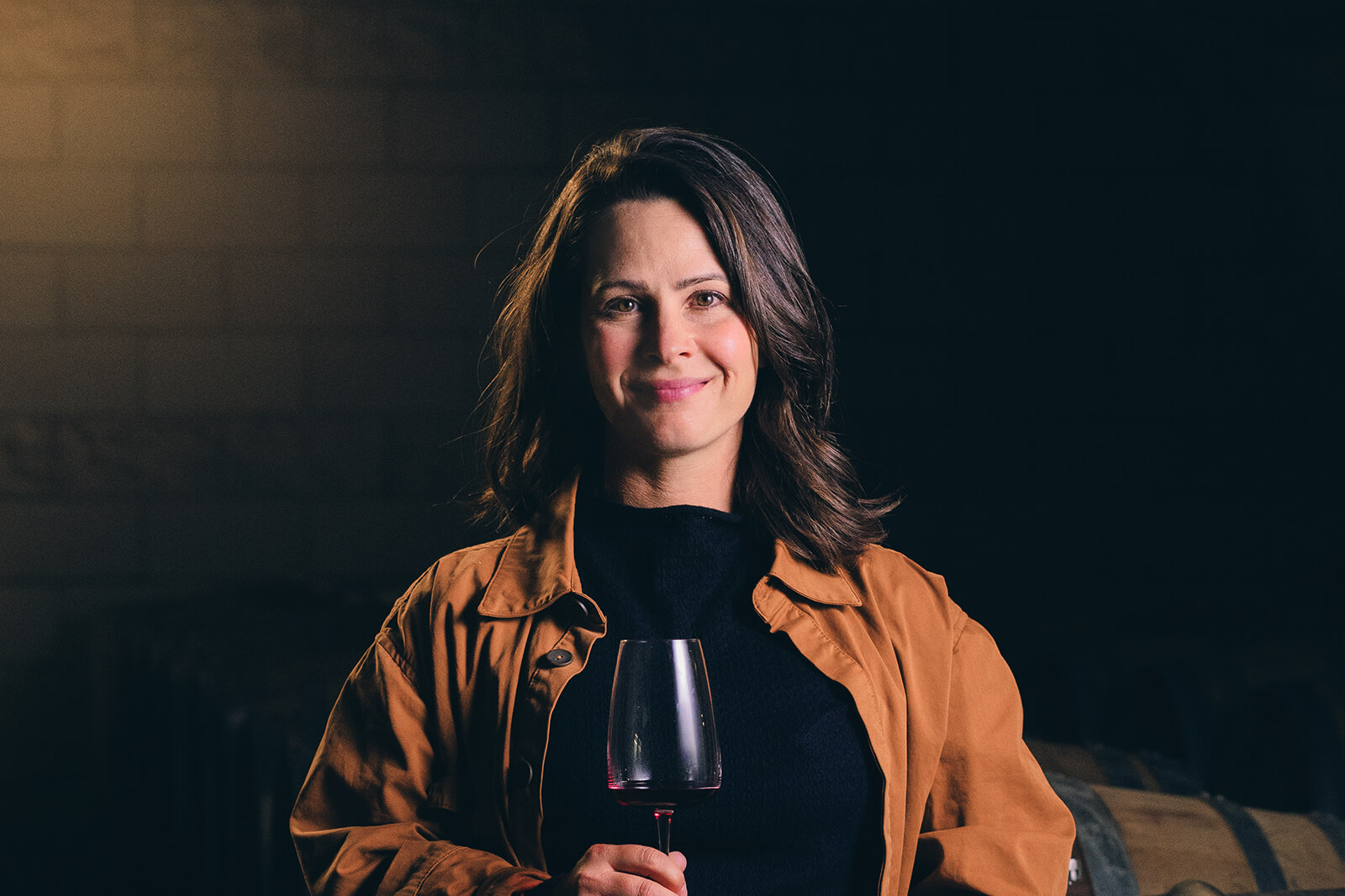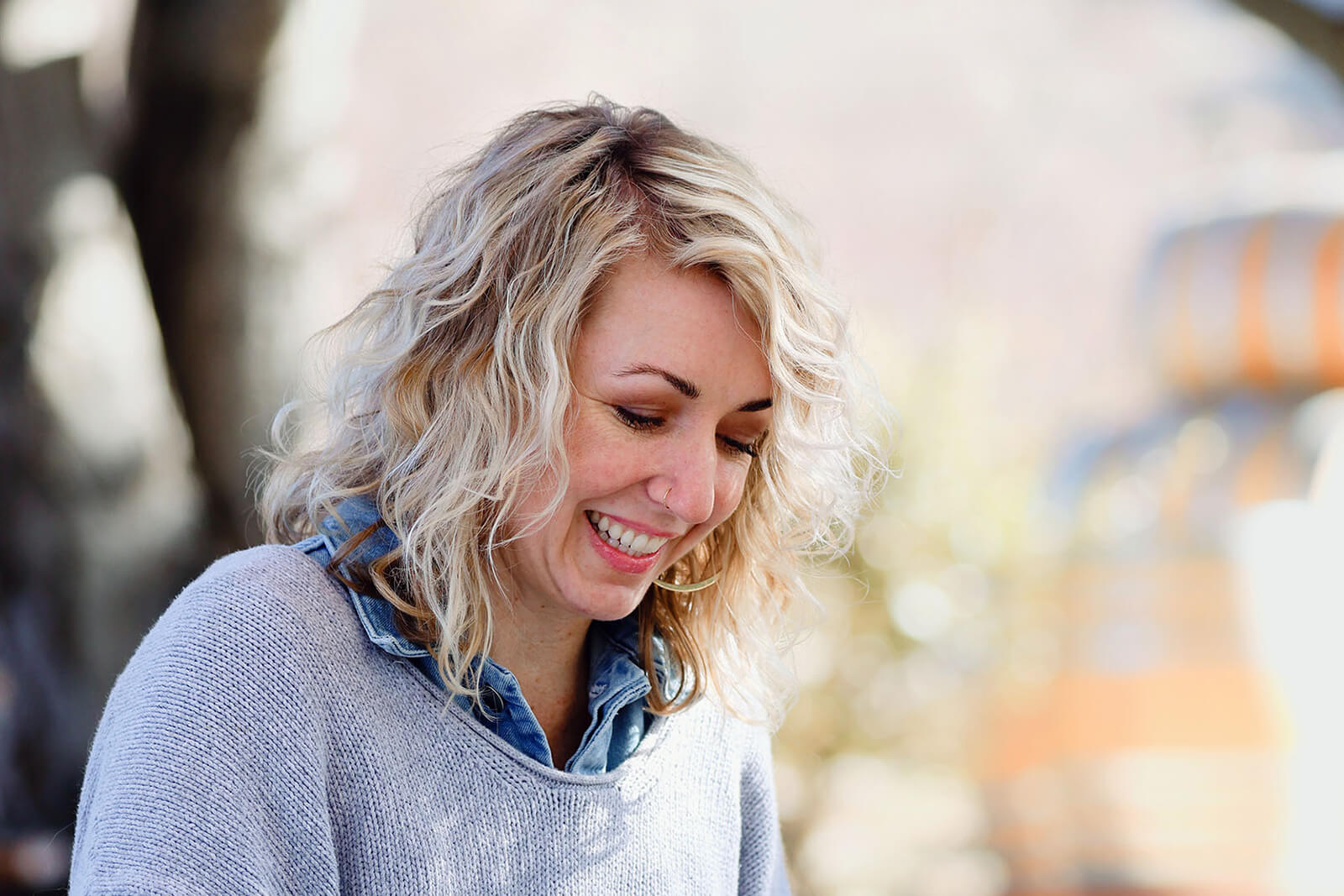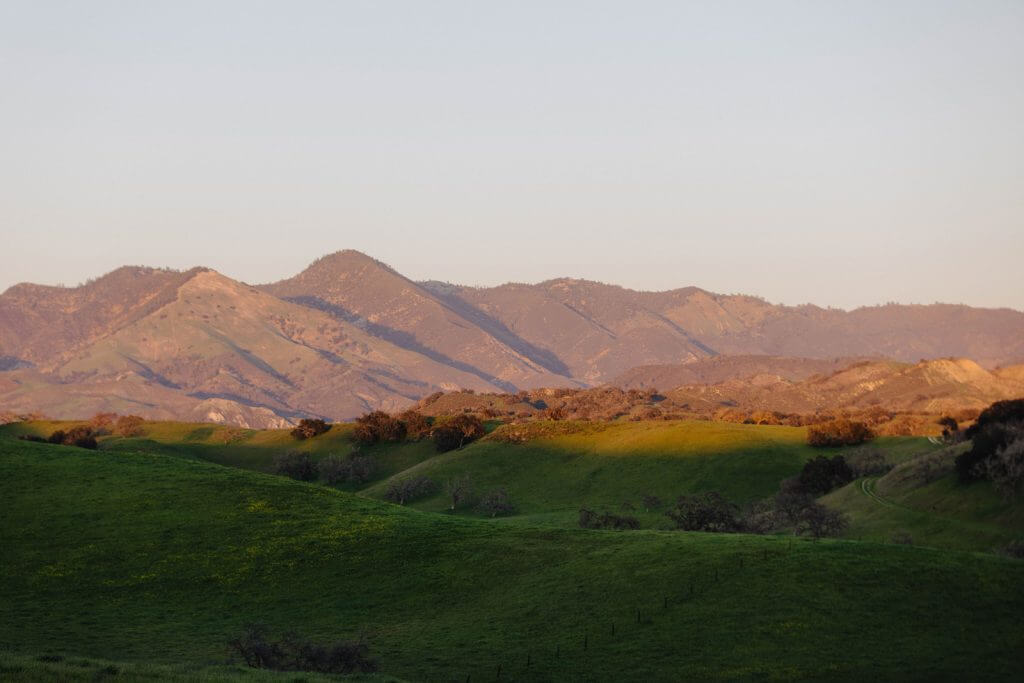Learn the Art of Their Craft
Meet SYV Maker, Veronica Medina
Maker Veronica Medina grew up in the suburbs of New York City in Farewell, New Jersey, where a serendipitous high-school elective sparked her love for ceramics. As an undergrad at NYU, she quickly advanced to graduate-level ceramics courses, learning to communicate ideas three-dimensionally rather than simply focusing on functional pieces. After teaching at local community centers and having an epiphany moment to teach high-school pottery, like the one that inspired her, Veronica earned her graduate degree in art education. She spent several years teaching ceramics to 6th-12th graders at Trevor Day School—her dream job—before eventually bringing her craft to the Santa Ynez Valley. We sat down with Veronica to learn more about her journey.
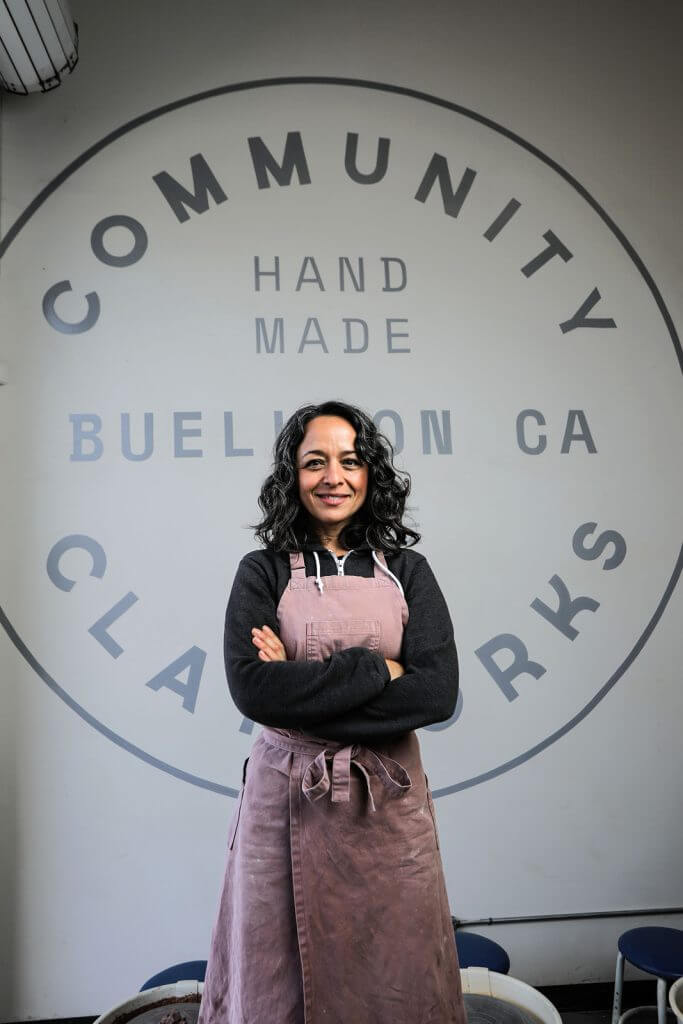
What brought you to the Santa Ynez Valley?
Veronica: I decided to take time off when I had my daughter, and my husband and I basically found a way for him to work remotely—though it meant leaving New York. We spent eight months hopping between Airbnbs all along the California coast, with everything we owned in storage and in my sister-in-law’s basement. We absolutely fell in love with it. When we went back to New York, we asked ourselves, ‘Could we really live out there?’ So, we came back and settled in Santa Barbara, where I discovered being a stay-at-home mom wasn’t quite right for me—I really missed working. On a whim, I applied for a job in the Santa Ynez Valley, got hired, and that’s how we ended up here. I fell in love with the Valley, and I’ve been here ever since. There’s a feeling of connection here that I found really special.
Pottery is a very tactile and hands-on form. What do you love most about the process of working with clay, and what do you hope students take away from that?
Veronica: In a lot of ways, clay is a meditation. It’s one of the places in my life where I experience flow, where I am not aware of how much time has passed and I can look at something and be like, ‘Wow.’ In many ways, things can go wrong, so it’s really humbling and really grounding. It’s satisfying to touch… the smell of it, the ability to manipulate it—it’s just something that I’ve always been attracted to.
What I would want students to take depends on what they need. Sometimes that’s not always obvious. Sometimes it’s simply the need to play, so they can kind of get out of their heads. Sometimes it’s a stress relief or a place to just zone out. The nuance of whatever it is that someone needs is different, and clay is a medium for that to happen—like a conduit.
What experiences have been the most rewarding, reaffirming why you decided to start Community Clayworks?
Veronica: There are lots of moments that are profoundly special, whether it’s an email telling me how important the studio is to someone as they’ve gone through cancer recovery. Those moments stick with you like, “Wow, I had no idea.” That’s really amazing.
When I started and called it Community Clayworks, I envisioned this community and having a tribe for myself. In a lot of ways, it is what I envisioned: groups I don’t even know exist, like an unofficial “Tequila Tuesday” class.
There’s really an authentic community here. I know it’s called “Community Clayworks” and it’s a little cheesy but watching friendships form and people taking care of one another—that, to me, is priceless. It’s the place you can go to cry or to celebrate. It’s this place that, selfishly, I wanted too — to find my tribe and feel a sense of belonging, and sharing that with other people.
The rewards are seeing people take care of one another, seeing amazing pieces of artwork come from it, and watching people create something they didn’t think they could. Every time someone jumps to the next level, it’s really fun to celebrate with them.”
Teaching and creating both require creativity, but in different ways. How do you balance your role as a teacher with your own creative process, and how has teaching influenced your artwork?
Veronica: In many ways, I’ve found myself thinking I need to practice what I preach, where I might have a certain vision, but I have to let go of it and be like, “Let the clay tell you what it wants to be.” Sometimes you’re on the wheel, and you’re like, “Yeah, this isn’t happening—it wants to be something else.” So, I think reminding myself to play and embracing the unexpected to just see what I’m going to learn from it is key. There’s often a happy accident where you’re like ‘woah, I didn’t know that would happen.’
I’ve always enjoyed the collaborative piece of asking questions while someone is creating, just to see where that direction is going to go. For the first time, I’m collaborating on a large-scale art installation called the Poppy Project, installing a big mosaic on the wall of Buellton’s post office. That’s been an incredibly rewarding, fun process with Stacey Curry, who is a dear friend and teaches at the studio.
The Poppy Project was my outlet this past year. I don’t know if that’s necessarily about developing my style and voice as much as it was about saying, “I belong to this wider community, and I want this to impact the place where I exist.” California poppies are a native plant that pop up and make everyone happy. How do I bring some of that joy to the side of the highway where the post office is? The idea was just make something bright and happy in the world.
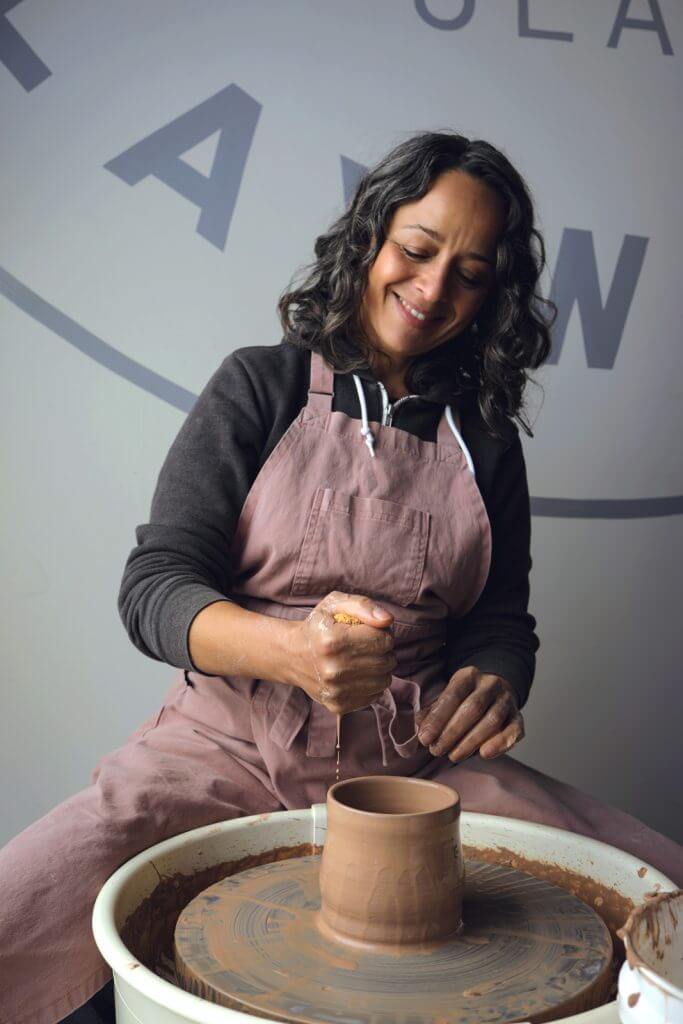
What is it about collaborating with another maker that you enjoy?
Veronica: One of the interesting things about education is that everyone comes to the table with their own experiences and cultural perspectives, which might be different than yours. Sometimes their idea is more exciting than what you were thinking about, and you can build upon that and vice versa. That openness leads to possibilities I wouldn’t necessarily have come to on my own. When something doesn’t feel balanced, we brainstorm: “What if we…?” until you have that “Yes!” moment. That process is very satisfying.
How do you approach teaching at your studio?
Veronica: There’s a loose syllabus of the basics—skills anyone needs to acquire. Beyond that, how they learn those skills is really guided by their interest. If somebody wants to make a butter dish, or a plate, or whatever, that guides the way in which we teach.
In general, there’s not one specific style I insist on teaching. The culture of the studio itself is something that I find precious and is important to nurture—this idea of inclusivity and encouragement—is crucial.
Sometimes someone jumps in with regulars, and the regulars embrace them: “Oh, a new person!” There’s always a lot of encouragement. There’s this informal critique that happens naturally in studios. So, if someone is struggling, they offer suggestions.
I always think of the studio as an extension of what my classroom environment was supposed to be — creating a safe space where people feel they can take risks to be creative. If not, you’re not really creating the environment for all that to happen. In a lot of ways, facilitating the space where the experience is supposed to happen is just as important as any of the skills you’re giving someone.
What kind of advice do you give to both new and advanced potters?
Veronica: For beginners, temper your expectations—you’re not going to make a 12-piece dinnerware set on day one. Some watch YouTube and think they’ve got it, then realize it’s harder than it looks. Part of it is letting yourself play and learn. Usually, you have to learn what you’re doing first. So, I often advise beginners to play and explore rather than being product-driven immediately.
I think there’s also wisdom in knowing that the more you learn about something the more you realize you don’t know. And clay is so vast that there’s no way to ever know anything about the medium, about its possibilities and that’s something that’s always felt exhilarating.
How do you encourage someone to support a local artist rather than buy a cheaper piece at a big box store?
Veronica: It’s about educating people that the overhead of making something locally is very different than importing.
And then beyond that, I think understanding that a maker’s mark means something when you hold a piece of pottery—that piece you’re holding has a whole story, right? A maker touched it and manipulated it. Someone else held that in their hands. And then you get to take that story, and that story ends up being part of your story. The fact that ceramics is part of the archeological record means something. We know about ourselves as humans because of it, that’s still part of the same story, right? Clay has that ability in a way that other mediums don’t. So, I think understanding that it’s a piece of artwork with a story—that’s got value to it.
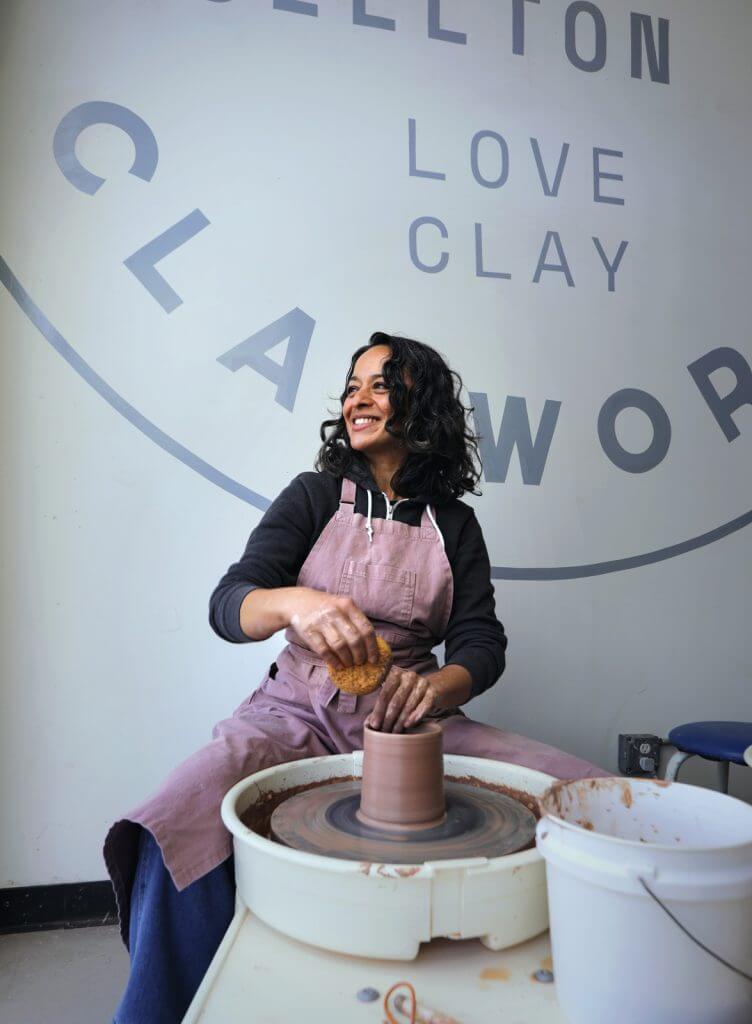
Do you think anyone can be a maker and is there a common thread that ties all makers together?
Veronica: I think if it’s something you love, then practice and you’ll get good at it. Having the desire to learn and that curiosity for how to improve, if you have that, anyone can do it. I think makers have a need to make, no matter what it is. There are parallels between gardening, cooking, and other crafts—having a raw material, seeing possibility, and adding imagination.
If you’re a maker, you have a practiced process and move it toward a final product. Even if you’re not a pro, you have your version of that. Seeing yourself get to these different stages is a journey. If you drink out of a mug you made 20 years ago, you remember when it was just a lump of clay. There’s something really powerful and beautiful about that process.
What advice would you give to aspiring makers who want to turn their passion into a business?
Veronica: If you’re a maker, you’ll be doing the same act repeatedly. So, you have to love it enough to find a flow or meditative experience that you’ll want to be immersed in it. There’s a lot of redundancy, so you must be willing to do that. Also, there’s a balance between making the artwork you love and hoping someone else loves it too (in which case find that audience), and making what sells. If you get a commission, realizing you have to create something to someone else’s vision sometimes is important. So being flexible enough to have that balance is required.
If you open a business, you have to be crazy enough to do it—it’s like having another child. You never stop thinking about it, and you need that commitment to get you through the hard days and celebrate the good ones.
It’s your day off in the Santa Ynez Valley, how do you spend your day?
Veronica: I would most certainly go for a hike in the Los Padres National Forest. Depending on the time of year, I would be plucking some miner’s lettuce and noshing as I walked. I might go to the plateau where there’s these wooden swings hanging from an oak and just have a picnic. That’s what my daughter loves to do.
What is it about the Santa Ynez Valley that makes it such a supportive environment for creators and makers?
Veronica: I think the beauty of the place and its slower-pace — it’s just as gorgeous as any Tuscan hillside. Every time I travel, I come home and think, ‘Wow, this place is just as beautiful as anywhere I’ve been.’ It’s that serenity. It’s sometime hard to pin that down—there’s a magic to it.
The first time we came to the valley, it was June gloom in Santa Barbara, and we thought, let’s get out of all of this coastal fog. We heard there was great weather in the valley and we’d never been here before, so we just drove a half hour over the hill.
I remember this feeling of being bewildered, first of all—Solvang. You’re like, where on earth did this come from?
But when you’re driving on the road and you’re next to Lake Cachuma and you just see these mountains that feel like they go on forever and the colors and the way the light is hitting everything, it’s magical.
But when you’re driving along the road near Lake Cachuma and see those mountains that feel like they go on forever, along with the vibrant colors and the way the light hits everything—it’s truly magical. It’s hard not to use the word “magical” because you’re in civilization but surrounded by nature — right on your doorstep. And there’s something really special about that — seeing coyotes and bobcats and all of the other wildlife all around you here.
